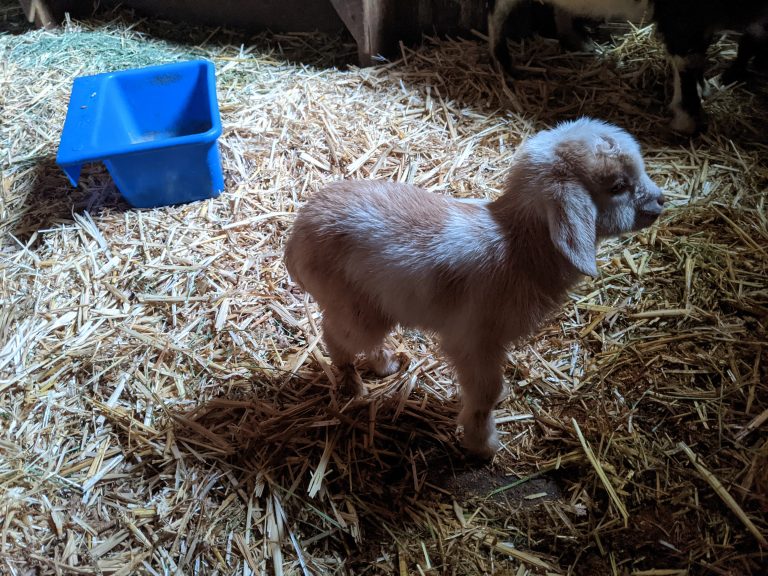SQUAMOUS CELL CARCINOMA: UC-DAVIS STUDY

Anyone who has been breeding Nigerians for any length of time has probably encountered squamous cell carcinoma, the so-called “under-the-tail” cancer which appears to run very strongly in certain lines of Nigerian Dwarf goats. It generally appears in an animal 4-9 years old as an ulceration or scabby sore in the perineal region. Sometimes it has a characteristic irregular ‘cauliflower’ look. While there are some treatments (creams, freezing, laser treatment) the cancer often returns after treatment. The cancer may progress fairly slowly or very quickly. Toward the end it may metastasize and move to different parts of the body. It almost always appears in animals with unpigmented (pink) or partly pigmented tails. One of the apparent causes is damage from uv exposure, which is greatest when there is no pigment to protect against it, and an inability to repair that damage, which may have a genetic component.
A study in Haflinger horses led to the discovery that some animals in that breed had a genetic predisposition to develop a form of squamous which affects the eye. Haflingers with this genetic predisposition were 5.6 times more likely to develop ocular SCC. The VGL at UC-Davis developed a genetic test to identify whether a horse is N/N (normal), N/R (normal carrying one copy of the risk factor), or R/R (homozygous for the risk factor and at much higher risk of developing cancer). The test not only allows informed management and treatment decisions, it allows breeders to make decisions that can prevent two copies of this risk factor from being passed to offspring.
How to Participate
While there is no guarantee that the Nigerian form of squamous is connected to a genetic mutation UC-Davis is interested in exploring the possible causes. For this first step in the process, UC-Davis needs a group of Nigerians with squamous cell carcinoma CONFIRMED BY BIOPSY.
If you are interested in participating, here are the requirements.
1. Signed client consent form (download here)
2. A copy of biopsy report
3. A copy of pedigree or registration number
4. Full body pictures of right and left side of animal. Front view photograph and back view photograph (showing tail pigmentation).
5. Hair as would normally be submitted for DNA test or blood sample collected in purple top tubes. Pulling hair is easy to do yourself, no need for a vet. How to pull goat hair for dna.
PLEASE DO NOT HESITATE TO CONTACT ME WITH ANY QUESTIONS. While pedigree information is requested for the study, all of this information is confidential.
Do you or did you have an animal with confirmed squamous but the animal has passed away so you cannot provide a DNA sample? – you can still participate by providing documents, pictures and pedigree information. Are you a veterinarian with clients who want to participate? Feel free to call or email with any questions.
herronhilldairy@gmail.com / 909-294-6287
SUBMITTING YOUR PAPERWORK
Email any digital files (photos, consent forms, biopsy reports, etc) here: research@vgl.ucdavis.edu
DNA samples and any hard-copy documents can be mailed here – label your envelope SCC GOAT:
If sending via US Mail:
Dr. Rebecca Bellone
Veterinary Genetics Laboratory
University of California
1 Shields Avenue
Davis, CA 95616-8744
If sending via FedEx, UPS:
Dr. Rebecca Bellone
Veterinary Genetics Laboratory
Old Davis Road
Davis, CA 95616-8744
You are welcome to submit documents by email or mail, whichever works best for you.
JOIN THE MAILING LIST FOR UPDATES ON THE SQUAMOUS STUDY